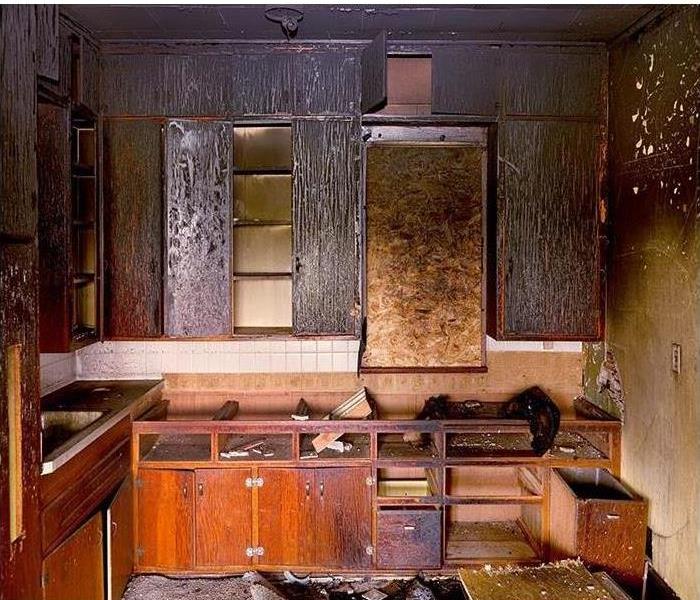Dealing With Smoke during Fire Restoration in St. Petersburg Homes
11/21/2022 (Permalink)
 A small flare-up can quickly get out of control. Our SERVPRO team is trained for complete fire damage restoration.
A small flare-up can quickly get out of control. Our SERVPRO team is trained for complete fire damage restoration.
Elaborate Fire Remediation in St. Petersburg by SERVPRO
It only takes seconds for a tiny spark to become an inferno consuming an entire property. Therefore, putting out even a minimal stove flare-up in the kitchen is not trivial because otherwise, the outcome would be devastating. However, stopping a blaze does not eliminate the need for fire restoration. Smoke spreads fast throughout the property, causing soiling and other forms of deterioration.
The kind of fire restoration your St. Petersburg home requires after an incident varies because of the different materials and contents in the house. Some surfaces attract smoke residues leading to significant surface concentration, while others bond with the deposits leading to staining or patches. SERVPRO takes decisive actions to clean all areas restoring preloss conditions.
Smoke Residue Removal Steps
- Locating residues
- Identifying residue types
- Identifying the affected surfaces
- Capturing and removing the residues
Soot and other smoke residues have varying properties, so removal is rarely a simple process of wiping the affected areas. The first reason for the difficulty is the convection forces that drive smoke movements during combustion. Cavities like wall spaces and concealed areas like cabinets tend to be colder. Thus smoke concentrates there, leaving more residues.
Why Smoke Residues Need Identifying
Any dark deposit left after a fire is soot to an untrained eye. Also, surfaces are either solid materials or fabrics. This simplistic view complicates restoration because you need to use the correct approaches or dedicate more effort to the process. Professionals like SERVPRO study the residues to determine their physical and chemical properties. Soot can be dry, wet, or smeary. Soot from organic material combustion differs from that of synthetic materials. Variations in materials range from porosity to age, influencing the cleaning processes.
Typical Ways to Remove Smoke Residues
- Vacuuming
- Wet cleaning
- Blast cleaning
A method like vacuuming is very helpful, especially when dealing with cavities or cleaning porous materials. Wet cleaning, on the other hand, helps remove embedded residues from surfaces. Sometimes the challenge is the surface, especially if it is rough and unfinished. Blast-cleaning with a medium like dry ice simplifies such tasks.
SERVPRO of NE St. Petersburg handles fire restoration under any circumstance making it “Like it never even happened.” You can reach us at (727) 522-0000.






 24/7 Emergency Service
24/7 Emergency Service